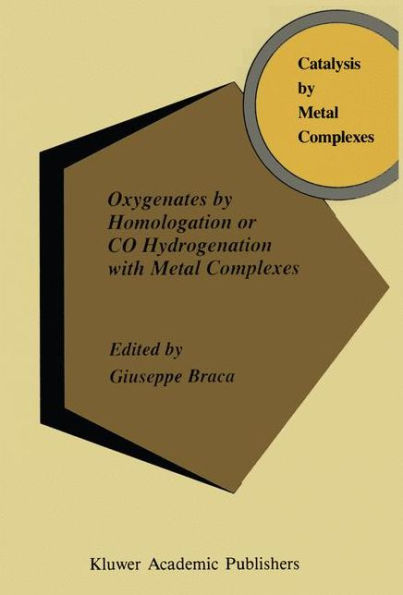Oxygenates by Homologation or CO Hydrogenation with Metal Complexes
Born and initially developed in various industrial laboratories, mainly in U.S.A. and Gennany, homogeneous phase catalytic carbon monoxide hydrogenation and alcohols and their derivatives carbonylation and homologation, have generally been considered and reviewed separately in the course of their 40 years history without concern for common aspects in the chemical transfonnations and in catalysis. Thanks to researchers of Japanese companies participating in the National C 1 Chemistry Project (1980-1987) the scientific and technical approaches in this field have been unified and applied in parallel, in the light of some common aspects of the chemical reactions and mechanisms. Now, at a moment when research seems becahned, a general presentation and discussion of the most recent topics might be an useful basis for further development of this chemistry. To delimit and simplify the discussion of the chemical aspects and the nature of the catalysts involved, the present review is limited to reactions employing homogeneous metal complexes for the direct conversion of syngas to oxygenates and to the hydrocarbonylation of these last to homologous derivatives. Since the previous practically contemporary reviews by Dombek [in Adv. Organomet. Chern. (1983)] on CO hydrogenation and by the present authors [in Asp.Homog.Catal.(Reidel Pu.l984)] on alcohol homologation fully cover the literature up to 1982, here we mainly refer to work done after 1982, and consider the cited reviews as covering the historical development of research in the 1940- 1980 period.
1101628995
Oxygenates by Homologation or CO Hydrogenation with Metal Complexes
Born and initially developed in various industrial laboratories, mainly in U.S.A. and Gennany, homogeneous phase catalytic carbon monoxide hydrogenation and alcohols and their derivatives carbonylation and homologation, have generally been considered and reviewed separately in the course of their 40 years history without concern for common aspects in the chemical transfonnations and in catalysis. Thanks to researchers of Japanese companies participating in the National C 1 Chemistry Project (1980-1987) the scientific and technical approaches in this field have been unified and applied in parallel, in the light of some common aspects of the chemical reactions and mechanisms. Now, at a moment when research seems becahned, a general presentation and discussion of the most recent topics might be an useful basis for further development of this chemistry. To delimit and simplify the discussion of the chemical aspects and the nature of the catalysts involved, the present review is limited to reactions employing homogeneous metal complexes for the direct conversion of syngas to oxygenates and to the hydrocarbonylation of these last to homologous derivatives. Since the previous practically contemporary reviews by Dombek [in Adv. Organomet. Chern. (1983)] on CO hydrogenation and by the present authors [in Asp.Homog.Catal.(Reidel Pu.l984)] on alcohol homologation fully cover the literature up to 1982, here we mainly refer to work done after 1982, and consider the cited reviews as covering the historical development of research in the 1940- 1980 period.
109.99
In Stock
5
1

Oxygenates by Homologation or CO Hydrogenation with Metal Complexes
227
Oxygenates by Homologation or CO Hydrogenation with Metal Complexes
227Hardcover(1994)
$109.99
109.99
In Stock

Product Details
| ISBN-13: | 9780792326281 |
|---|---|
| Publisher: | Springer Netherlands |
| Publication date: | 12/31/1993 |
| Series: | Catalysis by Metal Complexes , #16 |
| Edition description: | 1994 |
| Pages: | 227 |
| Product dimensions: | 5.98(w) x 9.02(h) x 0.24(d) |
From the B&N Reads Blog
